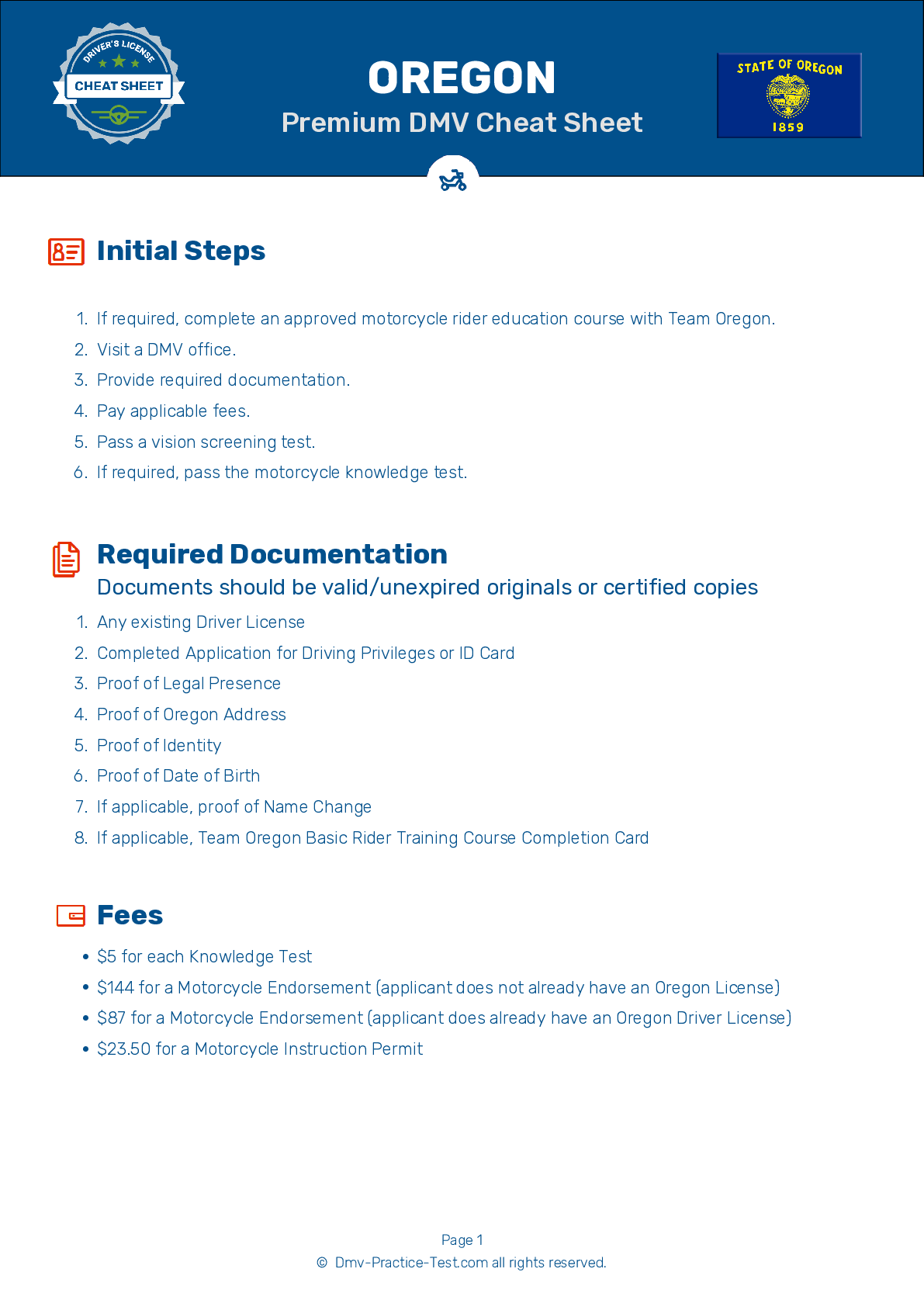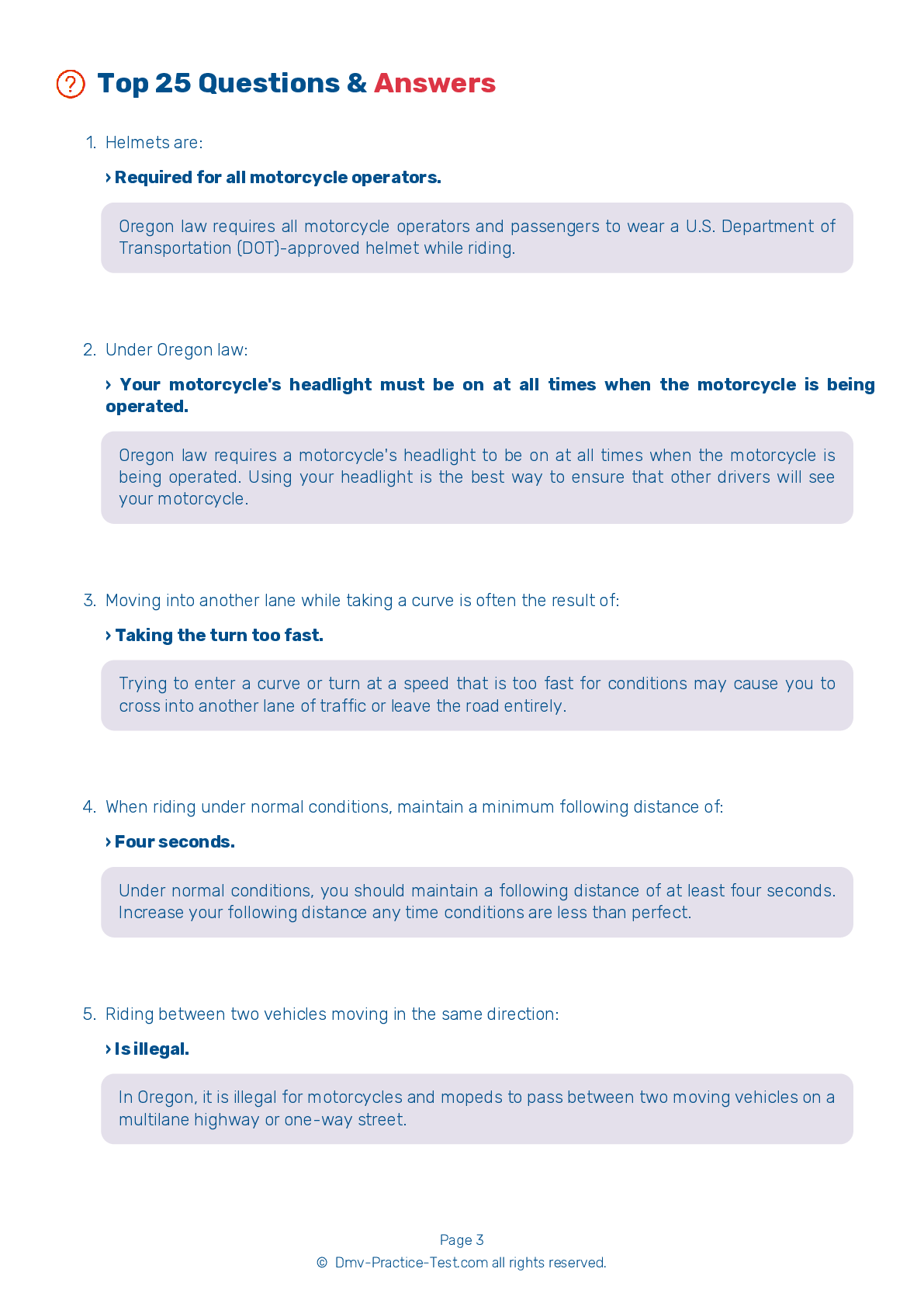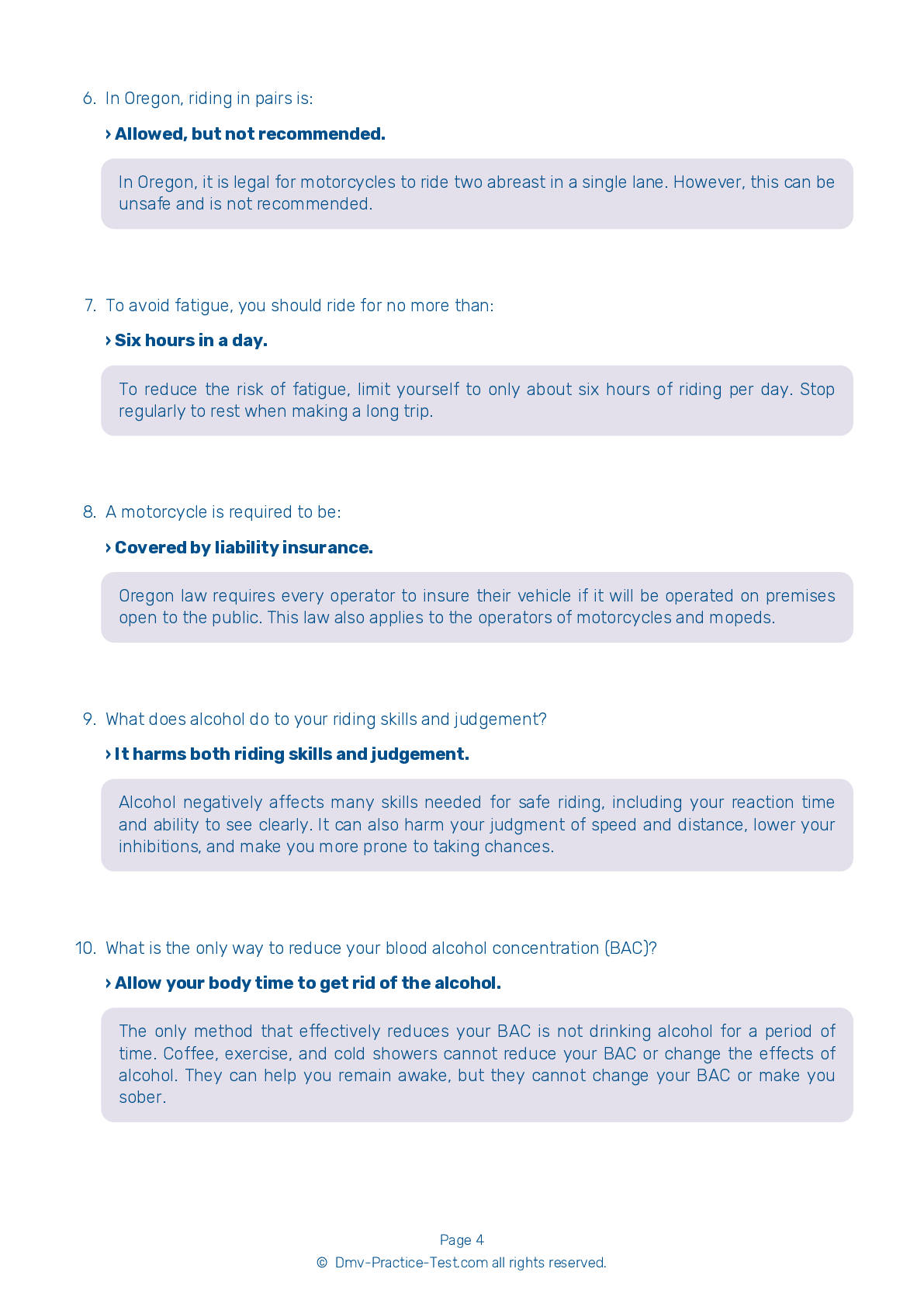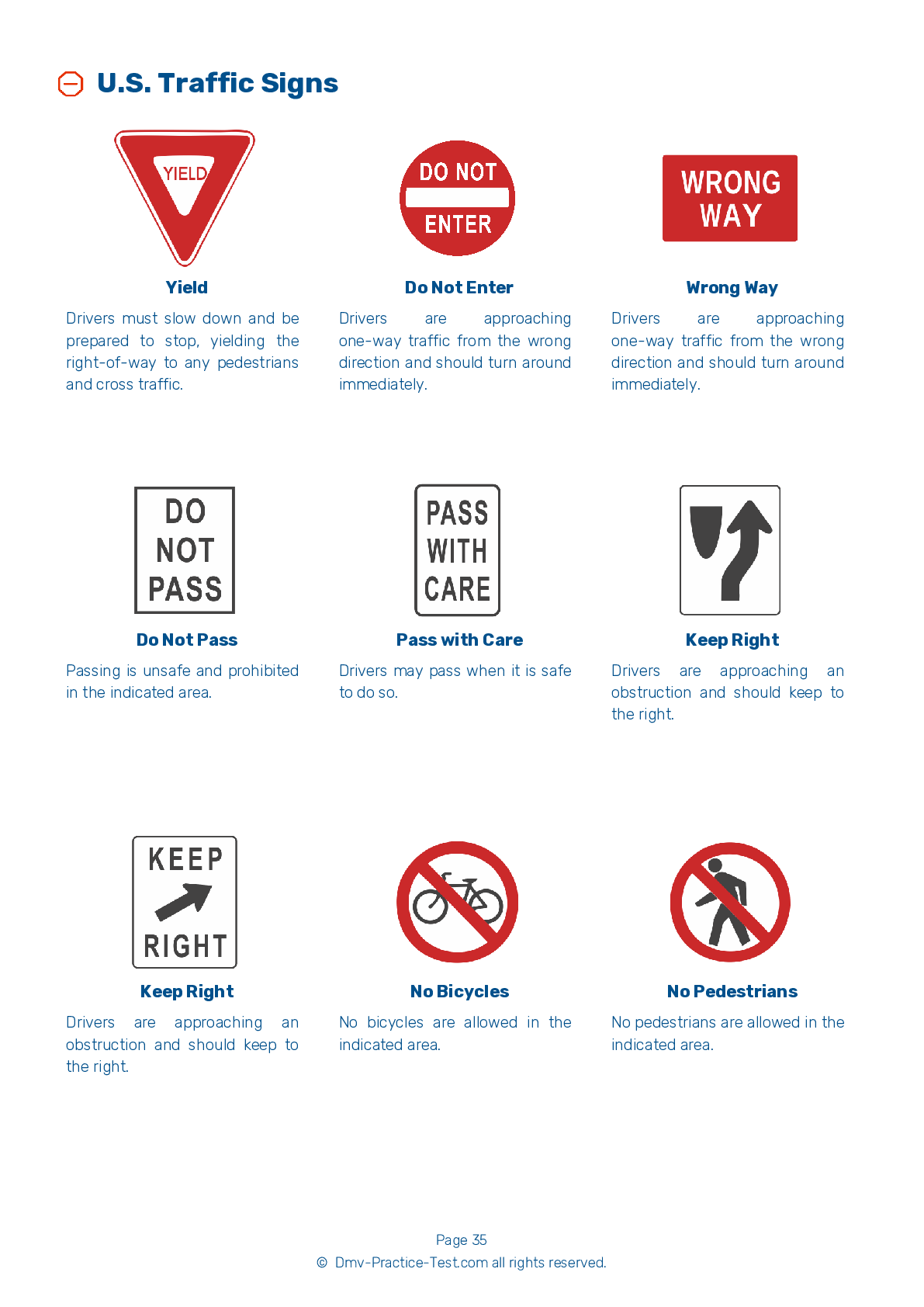Motorcycle Test | License OR 2025 | FREE Online Practice! #12 Page 4 of 4
Take this FREE motorcycle test (license in OR 2025) to check your knowledge of the road rules. To improve your results, download a motorcycle handbook online, study theory, and practice for free on our website. Still worried about how to get a motorcycle license in Oregon in 2025? Check our website for more sample tests, train as much as possible, and boost your grades!
19 . When approaching an uneven surface, such as a bump or pothole, you should rise slightly off of your seat:
When riding over an uneven surface, rising off of your seat will allow your joints to absorb some of the force of impact. This will make it less likely that the impact of the surface will throw you off of the motorcycle.
20 . A pre-ride inspection should be done:
To prevent any dangerous situations caused by technical issues, you should perform a thorough inspection of your motorcycle before every ride. Compared to a car, small technical problems can have more serious consequences on a motorcycle.
21 . The best lane position:
There is no single lane position that is always best and no single lane position that should always be avoided. You should vary your lane position in response to changes in riding conditions.
22 . You may carry a passenger:
A motorcycle operator cannot carry a passenger unless the motorcycle is equipped with a permanent passenger seat and footrests.
23 . Each traffic lane gives the motorcyclist how many paths of travel?
Each traffic lane provides three paths of travel for motorcyclists: the left, center, and right portions of the lane.
24 . When checking tire pressure:
You should use a tire gauge to check the tire pressure before every ride. An under-inflated tire may still look okay, so a visual check is not enough.
25 . When braking on a trike, you should know that:
An important handling characteristic to be aware of on a standard trike is that the two rear wheels have more braking power than the front wheel. Weight does not shift to the front wheel on a trike during hard braking in the same way that it does when braking on a two-wheel motorcycle. Instead, most of the weight stays on the rear wheels and makes the rear brakes more effective.
See the exact questions that will be on the 2025 Oregon DMV exam.
99.2% of people who use the cheat sheet pass the FIRST TIME
Jeneen was tired of paying $5/gallon. She got herself a scooter that required the motorcycle license. She studyed the motorcycle test cheat sheet and passed her test the next day!
Christopher tells us how he knew nothing prior to obtaining the motorcycle study guide, and he only got one question wrong because he clicked on the wrong answer by mistake.



